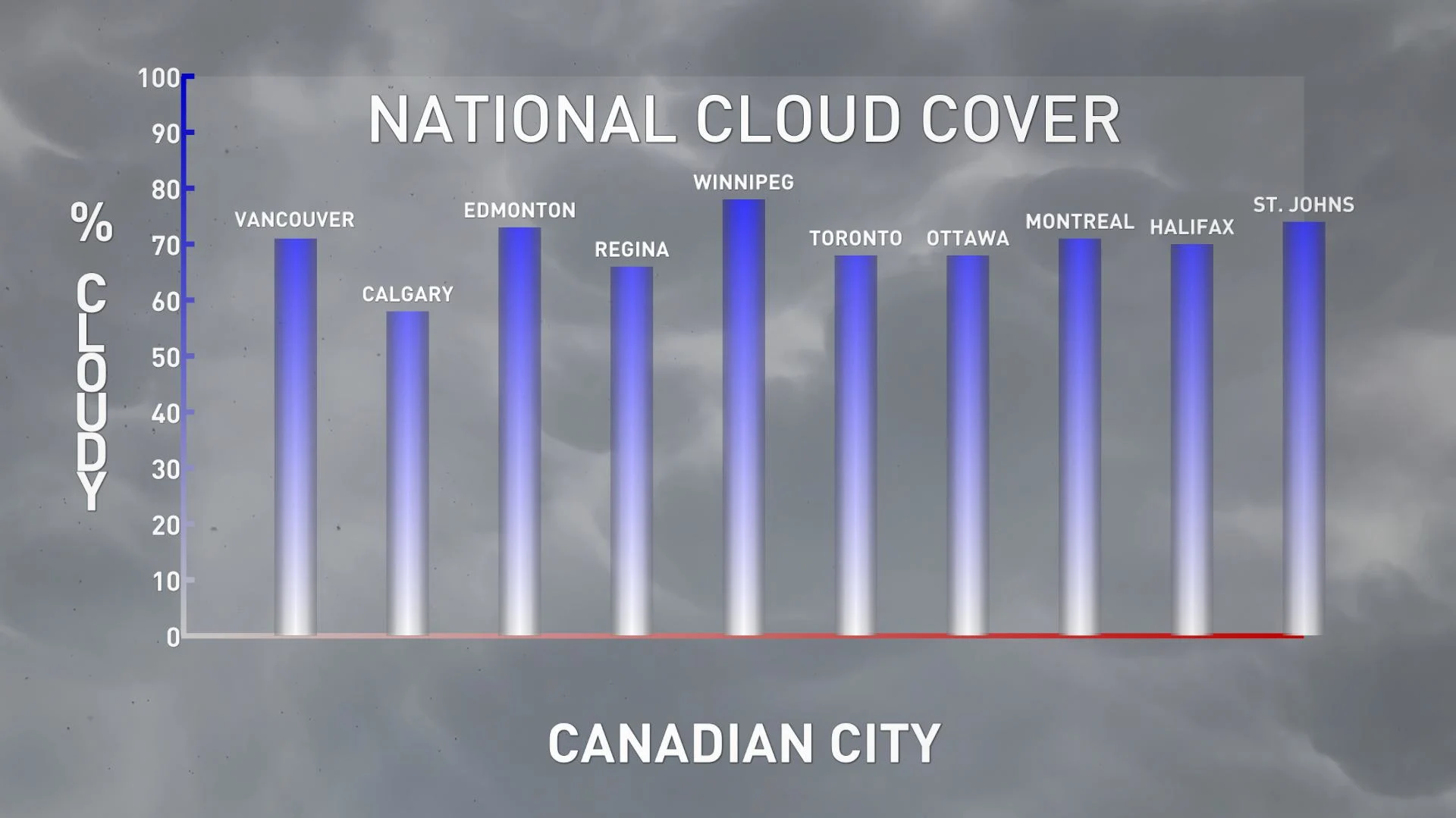
National Gloom Index: Find out how sun-starved your city's been this fall
This unique formula considers how the weather impacts the feeling of gloom as we approach the winter season.
Winter is right around the corner and as we're about to transition out of fall 2019, Canadians across the country can be susceptible to fall gloom.
But, we can be more scientific. May we present to you a precise way to measure the overall gloom factor.
Where do we start?
Well, cloud cover is a good foundation to investigate the overall gloominess of a particular location. Major Canadian cities in October and November ranged from 58 per cent cloud cover (Calgary) to 78 per cent cloud cover (sorry, Winnipeg).

The Gloom Index takes it another step further. The frequency of precipitation also plays a role in overall gloominess, and this variable was included in the calculation to provide your overall Gloom Index number.
THE FORMULA

This metric varied a little more than the cloud cover.
St. John's over the past couple of months has experienced precipitation approximately 70 per cent of days. Contrasting this with Regina is particularly striking, just picking up precipitation approximately 33 per cent of days.
A third factor that was omitted from this calculation is hours of daylight, so keep this in mind, as our northern neighbours are currently experiencing less than eight hours of daylight – extra gloomy for Edmonton, indeed.
THE BIG REVEAL

Keep in mind, we're noticeably less cloudy and gloomy than the fall of 2018 for Toronto and Ottawa - a true write off, which included a notorious, off-the-chart level of gloom.
In fact, Toronto recorded over 80 per cent cloud cover for the final quarter of 2018.










